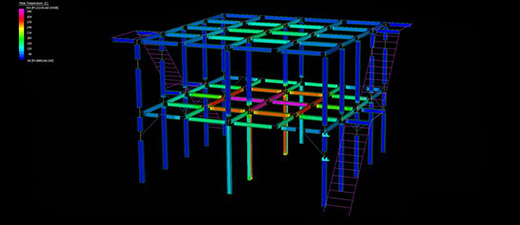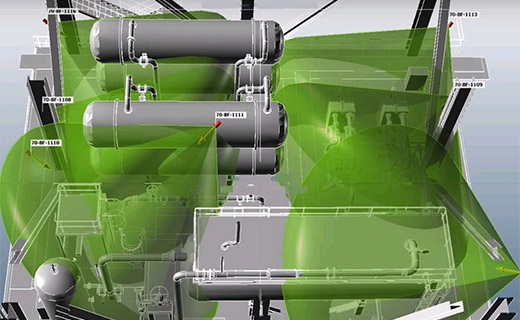SPECIALIST MODELLING SOLUTIONS
Complete Fire Design can solve our customers fire safety problems using complex numerical analysis techniques. These include but are not limited to the following:
Computational Fluid Dynamics Modelling
Complete Fire Design can undertake a suite of Computational Fluid Dynamics modelling to determine the effects of fire and explosion and calculate the products of combustion. The output of the work can be used to assess human tenability, determine smoke control system requirements, model fire spread and received radiant heat, undertake blast analysis, model fire and gas detector activation times, determine wind effects, model bushfires, determine the effects of fire suppression and control systems, determine coverage rates of sprinkler and monitor systems, calculate the effectiveness of radiant heat shields and be used in structural analysis.
Structural Fire Assessment
Our Fire Safety Engineering team has the technical ability to be able to undertake Finite Element Modelling of structures at elevated temperatures. We assess worst credible fire scenarios using Computational Fluid Dynamics modelling to develop time temperature curves to be utilised in finite element models to assess the performance of structures under thermal loading. The models are able to assess moment and load distribution through the structure to determine if additional fire protection is required. The results of the modelling is used in performance solutions to demonstrate compliance of reduced Fire Resistance Levels (FRL’s).

Fire & Explosion Consequence Analysis
Using DNV Phast Software Complete Fire Design can undertake Fire and Explosion Consequence Analysis to determine the likelihood of fire spread and the impact of explosions between fire zones. In this way we can determine Active and Passive System requirements to reduce the likelihood of escalation in an emergency situation. This work can be undertaken for both Greenfields and Brownfields sites to determine the most economical approaches for our clients to achieve.
Fire & Gas Mapping
Our Technical Safety & Risk team can undertake Fire & Gas Mapping Activities to optimise fire and gas detection layouts for onshore and offshore hydrocarbon processing and containment areas. This may be undertaken on a risk based approach by determining the likelihood of a gas release and locating detectors accordingly or on a geometric basis to meet coverage and voting requirements. The outputs of the models are 3D images showing voting contours that are easily understood and interpolated. We can provide 3D co-ordinates for detector locations and adjust detector locations to suit accordingly when new equipment is included in the fire zone.

Evacuation Analysis
Complete Fire Design’s engineering team can undertake three dimensional real time analysis of occupant evacuation during a fire emergency. The modelling can be undertaken using a distribution of occupant characteristics including travel speed, age, ambulatory ability, level of understanding of an emergency and also considers the tasks the occupants are undertaking at the time of the fire. The results of the evacuation analysis can then be interlinked with the results of the Computational Fluid Dynamics modelling to determine the tenability of escape routes during occupant evacuation under a range of worst credible fire scenarios. The results of the analysis are very useful in determining fire safety system requirements and for demonstrating fire safety compliance with regulatory bodies.
